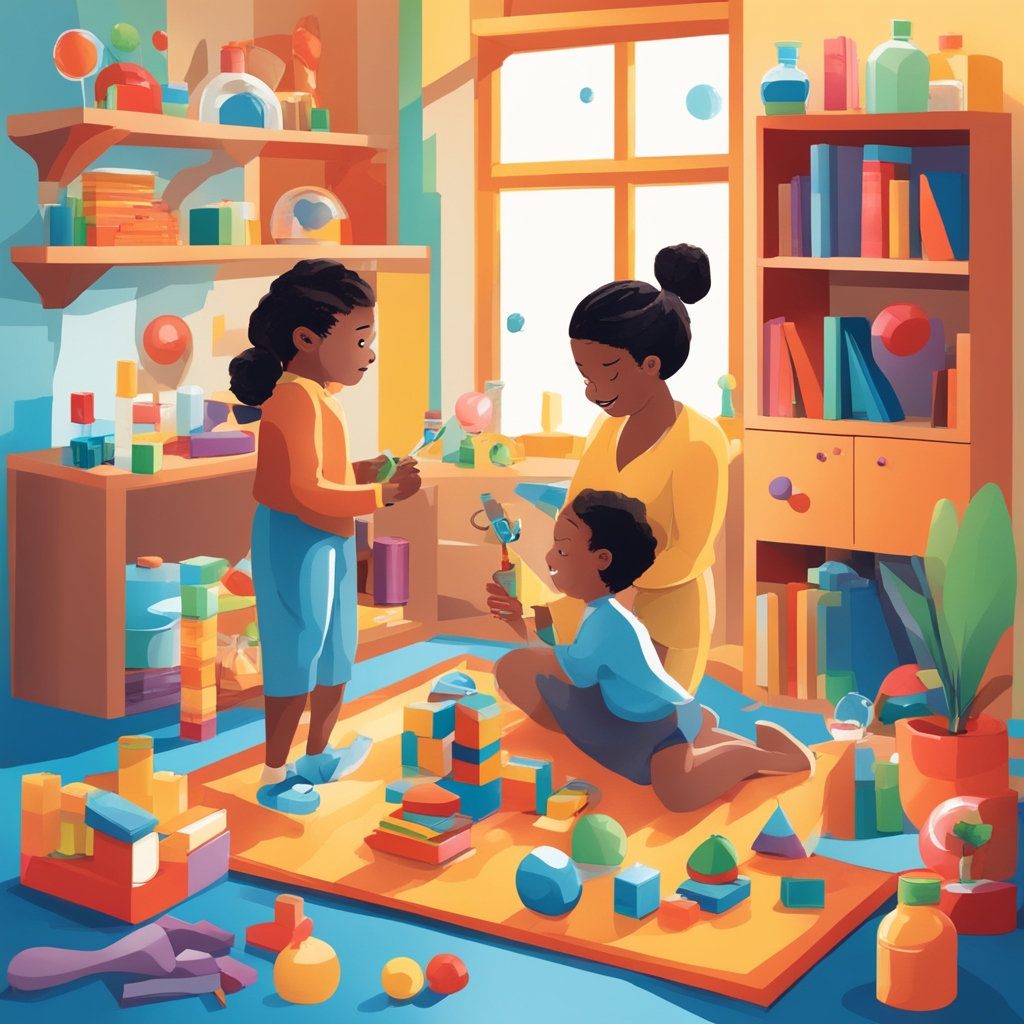Playtime is an essential aspect of childhood development that goes hand in hand with learning. By combining educational concepts with play, parents can create an enriched environment that not only entertains but also promotes cognitive, social, and physical skills. Here is a comprehensive guide on how to seamlessly integrate learning into playtime for children of various ages.
Understanding the Importance of Play

Before diving into specific strategies, it’s important to understand why play is so crucial for learning. Play is a natural behavior that allows children to explore the world, understand societal roles, and develop critical thinking skills. Through play, children learn to negotiate, share, and resolve conflicts. Thus, incorporating educational elements during play fosters a well-rounded development.
Choosing the Right Activities
Match Activities to Childs Interests
Select activities that align with your child’s current interests to maximize engagement. If they love dinosaurs, incorporate themes that involve counting dinosaur toys or storytelling with prehistoric narratives. When children are engaged in subjects they love, they become more open to learning new concepts related to those interests.
Age-Appropriate Activities
Ensuring the chosen activities are age-appropriate is crucial. For toddlers, simple puzzles and building blocks can introduce basic mathematical concepts like shapes and sizes. For older children, more complex games that involve strategic thinking or scientific experiments can enhance their understanding and interest in these areas.
Educational Play in Early Childhood
Using Everyday Items as Learning Tools
Everyday items can become tools for learning. Use pots and pans to teach rhythm and sounds, or utilize different colored cups for sorting and understanding hues. Such activities can make learning more relatable and less intimidating for young children.
Storytime with a Twist
Reading is a perfect blend of education and entertainment. Go beyond simply reading by asking open-ended questions about the story or encouraging your child to come up with alternative endings. This stimulates critical thinking and empathy.
Integrating Science and Math through Play
Simple Science Experiments
Introduce children to the wonders of science via simple experiments that can be done with household materials. Creating a vinegar and baking soda volcano or growing crystals can spark curiosity and build foundational scientific knowledge.
Math Games and Puzzles
Math doesn’t have to be tedious. Engage children with board games that involve counting, pattern recognition, or problem-solving. Games like these develop mathematical skills while providing an enjoyable experience.
Enhancing Social and Emotional Skills
Group Play and Cooperative Games
Encourage group play to develop social skills. Cooperative games that require teamwork contribute to emotional intelligence by teaching patience, self-control, and empathy. These activities are great for instilling the importance of working with others towards a common goal.
Role-Playing and Storytelling
Role-playing with dolls, action figures, or costumes allows children to explore different perspectives and emotions. Storytelling encourages creativity and expressive skills, vital for emotional growth. Facilitate these sessions by providing props or starting a story for your child to expand on.
The Digital Landscape: Learning through Technology
Educational Apps and Online Games
The digital world is rife with educational apps that combine learning with fun. These apps cover a range of subjects, from languages to coding, and are often interactive, which helps in retaining a child’s attention. Screen time should be moderated, focusing on high-quality educational content.
Creating Digital Art
For creatively inclined children, digital art applications can be a medium for both artistic expression and learning. They can learn about colors, shapes, and design, while also honing motor skills as they navigate different tools within the app.
The Role of Parents in Facilitating Learning through Play
Be an Active Participant
Join your child during playtime. Being actively involved not only enhances your bond but also allows you to gently guide educational experiences. Ask questions, encourage exploration, and celebrate discoveries together to reinforce positive learning outside of a formal context.
Providing a Balanced Structure
While play is important, balancing spontaneous play with structured educational activities ensures a comprehensive developmental experience. Schedule time for both, but also be flexible to adapt based on your child’s mood and interest.
Overcoming Challenges in Educational Play
Dealing with Short Attention Spans
Children often have short attention spans, making it challenging to involve them in prolonged activities. Break tasks into smaller, manageable segments and intersperse active play with quiet learning sessions to maintain interest.
Making Learning Fun
One common pitfall is turning play into another form of homework. To keep learning fun, incorporate humor and praise, focusing more on the process than the outcome. This reduces pressure and builds a positive association with learning.
Conclusion
Incorporating learning into playtime can be a fulfilling endeavor for both parents and children. By understanding the significance of play, choosing appropriate activities, and using a variety of tools and methods, learning becomes an enjoyable part of your child’s daily routine. The key is to maintain a balance, allowing space for both structured learning and creative, unstructured play. With patience and creativity, parents can transform playtime into a rich educational experience that equips children with crucial life skills and a love for learning.